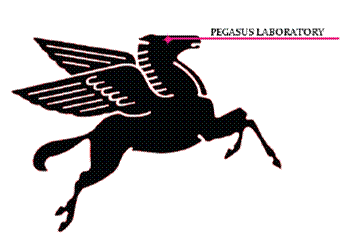

The physical layout of the deflecting cavity.

The fields of deflecting cavity. Due to the asymetry, a horizontal slit can be used to reduce the effective energy spread due to PWT effects.

A calibrated sample measurement of the longitudinal phase space of a photoinjector blowout beam.
Longitudinal Phase Space Measurement
Motivation
A requirement of creating the highest brightness beams is being able to measure their brightness. The "brightness" parameter of a beam is the beam's density in phase space. The hyperdimensional volume in phase space is known as the emittance. To determine the brightness of a beam, both the transverse and longitudinal emittances must be measured. Quad scan techniques have allowed for adequate resolution measurements of transverse emittance. As higher brightness beams are created, the need for a high resoultion longitudinal emittance measurement arises to properly resolve the beam's emittance and therefore its brightness.
Experimental Layout and Procedure

LPS measurement beamline configuration.
The Longitudinal phase space is mapped upon the transverse dimensions and imaged in a five step process. The first step is to horizontally slit the beam. This step serves two purposes. The first is to drastically reduce the amount of charge in the beam, and therefore the space charge forces, causing the phase space to be minimally perturbed throughout the rest of the measurement process. The second is to cut the transverse profile of the beam while the beam is in the deflecting cavity. If not slitted, the deflecting cavity would introduce additional energy spread onto the beam on the order of 100% of the original energy spread for the regime that we are currently investigation (The photoinjector blowout regime).
The second step is to focus the beam using a quadrupole doublet. This process minimizes the transverse spatial profile of the beam so that the dispersion due to the deflecting cavity and dipole spectrometer results in the majority of the spread we see in the transverse profile of the beam when imaged. Without this step, the resolution of the measurement would be limited by the systematic error of the transverse profile convoluting the measurement.
The third step is to deflect the beam vertically using an X-band 9.956 GHz deflecting cavity. The dispersion from this cavity and a drift results in a mapping of temporal information onto the vertical transverse spatial profile of the beam. The slit that we used in the first step reduces the energy spread that is imbued upon the beam by Panofsky-Wenzel effects. The resultant resolution of the temporal measurement is approximately 50 femtoseconds.
The fourth step is to disperse the beam horizontally using a dipole spectrometer, thereby mapping longitudinal momentum information onto the horizontal spatial profile of the beam. The resulting resolution of the momentum spread measurement is approximately 1keV/c.
The last step is imaging the transverse profile of the beam using a YAG screen, completing the single shot LPS measurement.
Results
A sample shot is seen right. LPS investigations include not only the determination of the longitudinal emittance, but also slice energy spread, a critical parameter for FELs, as well as the LPS slope, which can give insight into beam dynamics with respect to accelerator parameters such as charge, gun phase, and laser spot size on the photocathode.




